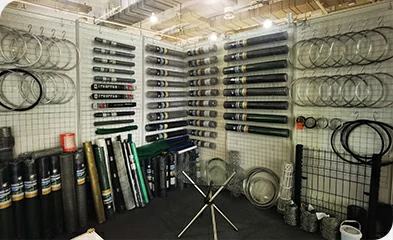 TEL:
+86-13102802206
TEL:
+86-13102802206
 Email:
fencenetting@china.com
Email:
fencenetting@china.com
 Language
Language
 TEL:
+86-13102802206
TEL:
+86-13102802206
 Email:
fencenetting@china.com
Email:
fencenetting@china.com
 Language
Language


Designing a Gabion Retaining Wall A Comprehensive Guide
Gabion retaining walls are increasingly becoming a popular choice in civil engineering and landscape architecture due to their versatility, durability, and aesthetic appeal. These structures, constructed from wire mesh baskets filled with stones, serve as effective solutions for earth retention, erosion control, and landscaping projects. This article will provide an overview of gabion retaining wall design, considering various factors that contribute to their effectiveness and longevity.
Understanding Gabion Walls
Gabion walls consist of wire baskets filled with natural stones or rocks. The term gabion is derived from the Italian word gabbione, meaning big cage. Traditionally, these walls were used for river control and flood management. However, their popularity has expanded into landscaping, noise barriers, and slope stabilization.
Advantages of Gabion Retaining Walls
One of the significant advantages of gabion walls is their ability to allow water drainage, thus reducing hydrostatic pressure that can lead to structural failure in traditional solid walls. The porous nature of gabions helps prevent erosion and provides stability to slopes by allowing water to flow through without causing soil instability.
In addition, gabion walls are environmentally friendly. They can be constructed using locally sourced stones, and the use of natural materials blends beautifully into the landscape. The flexibility in design allows for creative shapes and forms, making them aesthetically pleasing.
Key Design Considerations

1. Wall Height and Slope The height of a gabion wall should be determined based on the soil conditions and the slope of the terrain. Generally, for a wall height of up to 3-4 feet, a standard slope of 21 (horizontal to vertical) is acceptable. For taller walls, a more significant slope or additional reinforcement may be necessary.
2. Foundation A solid foundation is crucial for the stability of gabion walls. The base should be excavated according to the height and load of the wall, often requiring a compacted gravel foundation. This provides better drainage, reducing the likelihood of water accumulation behind the wall.
3. Material Selection The choice of stone for filling the gabions is essential. The stones should be durable, resistant to weathering, and should vary in size to ensure a stable fill. The wire mesh used for the baskets should also be corrosion-resistant, with coatings such as galvanized or PVC for longevity.
4. Drainage Solutions To maintain the effectiveness of gabion walls, it’s vital to incorporate drainage solutions. Weep holes or perforated drainage pipes can be integrated into the design to facilitate water flow. Proper drainage minimizes pressure build-up behind the wall, reducing the risk of structural failure.
5. Construction Techniques During the construction of gabion walls, careful attention should be paid to the placement of the wire baskets. They should be aligned correctly and secured together to maintain the wall's integrity. The stones should be packed tightly, and attention should be given to ensure no gaps or voids are left.
6. Aesthetic Factors Gabion walls can also serve as decorative features in landscaping. Different types of stones and designs can be employed to create visually appealing structures. Vegetation can be integrated around the walls to soften their appearance and enhance the overall landscape.
Conclusion
Gabion retaining walls are a practical and visually appealing option for various construction and landscaping projects. By carefully considering design elements such as height, foundation, drainage, and materials, these structures can provide effective earth retention solutions while blending seamlessly into the environment. As a testament to their durability and functionality, gabion walls continue to be a favored choice among engineers and designers alike, presenting a perfect amalgamation of form and function in modern design.